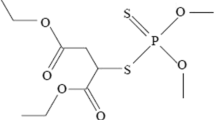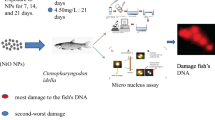Abstract
There is ample evidence stating Polychlorinated biphenyls (PCBs) as neurotoxins. In the current study, we have analyzed the behavioural impact of PCBs exposure in adult rats and assessed the simultaneous effect of antioxidant melatonin against the PCBs action. The rats were grouped into four and treated intraperitoneally with vehicle, PCBs, PCBs + melatonin and melatonin alone for 30 days, respectively. After the treatment period the rats were tested for locomotor activity and anxiety behaviour analysis. We confirmed the neuronal damage in the cerebral cortex by molecular and histological analysis. Our data indicates that there is impairment in locomotor activity and behaviour of PCBs treated rats compared to control. The simultaneous melatonin treated rat shows increased motor coordination and less anxiety like behaviour compared to PCBs treated rats. Molecular and histological analysis supports that, the impaired motor coordination in PCBs treated rats is due to neurodegeneration in motor cortex region. The results proved that melatonin treatment improved the motor co-ordination and reduced anxiety behaviour, prevented neurodegeneration in the cerebral cortex of PCBs-exposed adult male rats.








Similar content being viewed by others
References
Wong MH, Wu SC, Deng WJ, Yu XZ, Luo Q, Leung AO, Wong CS, Luksemburg WJ, Wong AS (2007) Export of toxic chemicals: a review of the case of uncontrolled electronic-waste recycling. Environ Pollut 149:131–140
Nfon E, Cousins IT (2006) Interpreting time trends and biomagnification of PCBs in the Baltic region using the equilibrium lipid partitioning approach. Environ Pollut 144:994–1000
Schettgen T, Gube M, Esser A, Alt A, Kraus T (2012) Plasma polychlorinated biphenyls (PCB) levels of workers in a transformer recycling company, their family members, and employees of surrounding companies. J Toxicol Environ Health A 75:414–422
Wolff MS (1985) Occupational exposure to polychlorinated biphenyls (PCBs). Environ Health Perspect 60:133–138
Abballe A, Barbieri PG, di Domenico A, Garattini S, Iacovella N, Ingelido AM, Marra V, Miniero R, Valentini S, De Felip E (2013) Occupational exposure to PCDDs, PCDFs, and PCBs of metallurgical workers in some industrial plants of the Brescia area, northern Italy. Chemosphere 90:49–56
Evangelista de Duffard AM, Duffard R (1996) Behavioral toxicology, risk assessment, and chlorinated hydrocarbons. Environ Health Perspect 104:353–360
Faroon O, Jones D, de Rosa C (2000) Effects of polychlorinated biphenyls on the nervous system. Toxicol Ind Health 16:305–333 (Review)
Boucher O, Muckle G, Jacobson JL, Carter RC, Kaplan-Estrin M, Ayotte P, Dewailly E Jacobson SW (2014) Domain-specific effects of prenatal exposure to PCBs, mercury, and lead on infant cognition: results from the Environmental Contaminants and Child Development Study in Nunavik. Environ Health Presp 122:310–316
Peper M, Klett M, Morgenstern R (2005) Neuropsychological effects of chronic low-dose exposure to polychlorinated biphenyls (PCBs): a cross-sectional study. Environ Health 4:22
Fitzgerald EF, Belanger EE, Gomez MI, Cayo M, McCaffrey RJ, Seegal RF, Jansing RL, Hwang SA, Hicks HE (2008) Polychlorinated biphenyl exposure and neuropsychological status among older residents of upper Hudson River communities. Environ Health Perspect 116:209–215
Haase RF, McCaffrey RJ, Santiago-Rivera AL, Morse GS, Tarbell A (2009) Evidence of an age-related threshold effect of polychlorinated biphenyls (PCBs) on neuropsychological functioning in a Native American population. Environ Res 109(1):73–85
Bouchard MF, Oulhote Y, Sagiv SK, Saint-Amour D, Weuve J (2014) Polychlorinated biphenyl exposures and cognition in older U.S. adults: NHANES (1999–2002). Environ Health Perspect 122:73–78
Latchney SE, Hein AM, O’Banion MK, DiCicco-Bloom E, Opanashuk LA (2013) Deletion or activation of the aryl hydrocarbon receptor alters adult hippocampal neurogenesis and contextual fear memory. J Neurochem 125:430–445
Xu G, Zhou Q, Wan C, Wang Y, Liu J, Li Y, Nie X, Cheng C, Chen G (2013) 2,3,7,8-TCDD induces neurotoxicity and neuronal apoptosis in the rat brain cortex and PC12 cell line through the down-regulation of the Wnt/β-catenin signaling pathway. Neurotoxicology 37:63–73
Galano A, Tan DX, Reiter RJ (2013) On the free radical scavenging activities of melatonin’s metabolites, AFMK and AMK. J Pineal Res 54:245–257
Pandi-Perumal SR, BaHammam AS, Brown GM, Spence DW, Bharti VK, Kaur C, Hardeland R Cardinali DP (2013) Melatonin antioxidative defense: therapeutical implications for aging and neurodegenerative processes. Neurotox Res 23:267–300
Karadayian AG, Bustamante J, Czerniczyniec A, Cutrera RA, Lores-Arnaiz S (2014) Effect of melatonin on motor performance and brain cortex mitochondrial function during ethanol hangover. Neuroscience 269:281–289
Venkataraman P, Krishnamoorthy G, Vengatesh G, Srinivasan N, Aruldhas MM, Arunakaran J (2008) Protective role of melatonin on PCB (Aroclor 1,254) induced oxidative stress and changes in acetylcholine esterase and membrane bound ATPases in cerebellum, cerebral cortex and hippocampus of adult rat brain. Int J Dev Neurosci 26:585–591
Venkataraman P, Selvakumar K, Krishnamoorthy G, Muthusami S, Rameshkumar R, Prakash S, Arunakaran J (2010) Effect of melatonin on PCB (Aroclor 1254) induced neuronal damage and changes in Cu/Zn superoxide dismutase and glutathione peroxidase-4 mRNA expression in cerebral cortex, cerebellum and hippocampus of adult rats. Neurosci Res 66:189–197
Dunham NW, Miya TS (1957) A note on a simple apparatus for detecting neurological deficit in rats and mice. J Am Pharm Assoc 46:208–209
Saillenfait AM, Vannier B (1988) Methodological proposal in behavioural teratogenicity testing: assessment of propoxyphene, chlorpromazine, and vitamin A as positive controls. Teratology 37:185–199
Nishino T, Takeuchi T, Takechi K, Kamei C (2008) Evaluation of anxiolytic-like effects of some short-acting benzodiazepine hypnotics in mice. J Pharmacol Sci 107:349–354
Avwioro G (2011) Histochemical uses of haematoxylin: a review. J Pharm Clin Sci 1:11
Kluver H, Barrera E (1953) A method for the combined staining of cells and fibers in the nervous system. J Neuropathol Exp Neurol 12:400–403
Yogesh Kanna S, Kathiravan K, Pradeep Kumar N, Ramesh Kumar R (2014) Restorative effects of glycyrrhizic acid on neurodegeneration and cognitive decline in chronic cerebral hypoperfusion model of vascular dementia in rats. Int J Anatom Sci 5:57–65
Zar JH (1974) Bio-statistical analysis. Prentice Hall, New Jersey, p 620
Selvakumar K, Sheerin Banu L, Krishnamoorthy G, Venkataraman P, Elumalai P, Arunakaran J (2011) Differential expression of androgen and estrogen receptors in PCB (Aroclor 1254)-exposed rat ventral prostate: impact of alpha-tocopherol. Exp Toxicol Pathol 63:105–112
Selvakumar K, Prabha RL, Saranya K, Bavithra S, Krishnamoorthy G, Arunakaran J (2013) Polychlorinated biphenyls impair blood–brain barrier integrity via disruption of tight junction proteins in cerebrum, cerebellum and hippocampus of female Wistar rats: neuropotential role of quercetin. Hum Exp Toxicol 32:706–720
Krishnamoorthy G, Selvakumar K, Venkataraman P, Elumalai P, Arunakaran J (2013). Lycopene supplementation prevents reactive oxygen species mediated apoptosis in Sertoli cells of adult albino rats exposed to polychlorinated biphenyls. Interdiscip Toxicol 6:83–92
Verner MA, Plusquellec P, Muckle G, Ayotte P, Dewailly E, Jacobson SW, Jacobson JL, Charbonneau M, Haddad S (2010) Alteration of infant attention and activity by polychlorinated biphenyls: unravelling critical windows of susceptibility using physiologically based pharmacokinetic modeling. Neurotoxicology 31:424–431
Blanchard DC, Griebel G, Blanchard RJ (2001) Mouse defensive behaviours: pharmacological and behavioural assays for anxiety and panic. Neurosci Behav Physiol 25:205–218
Espejo EF (1997) Effects of weekly or daily exposure to the elevated plus-maze in male mice. Behav Brain Res 87:233–238
Mariussen E, Myhre O, Reistad T, Fonnum F (2002) The polychlorinated biphenyl mixture aroclor 1254 induces death of rat cerebellar granule cells: the involvement of the N-methyl-d-aspartate receptor and reactive oxygen species. Toxicol Appl Pharmacol 179:137–144
Kaya H, Hany J, Fastabend A, Roth-Harer A, Winneke G, Lilienthal H (2002) Effects of maternal exposure to a reconstituted mixture of polychlorinated biphenyls on sex-dependent behaviours and steroid hormone concentrations in rats: dose–response relationship. Toxicol Appl Pharmacol 178:71–81
Yu SP, Yeh C, Strasser U, Tian M, Choi DW (1999) NMDA receptor-mediated K+ efflux and neuronal apoptosis. Science 284:336–339
Johnson PL, Shekhar A (2006) Panic-prone state induced in rats with GABA dysfunction in the dorsomedial hypothalamus is mediated by NMDA receptors. J Neurosci 26:7093–7104
Blundell J, Adamec R (2007) The NMDA receptor antagonist CPP blocks the effects of predator stress on pCREB in brain regions involved in fearful and anxious behaviour. Brain Res 1136:59–76
Wang C, Anastasio N, Popov V, LeDay A, Johnson KM (2004) Blockade of N-methyl-d-aspartate receptors by phencyclidine causes the loss of corticostriatal neurons. Neuroscience 125:473–483
Bavithra S, Sugantha Priya E, Selvakumar K, Krishnamoorthy G, Arunakaran J (2015) Effect of melatonin on glutamate: BDNF signaling in the cerebral cortex of polychlorinated biphenyls (PCBs)-exposed adult male rats. Neurochem Res 40:1858–1869
Jones EG (1998) Viewpoint: the core and matrix of thalamic organization. Neuroscience 85:331–345
Moriya T, Horie N, Mitome M, Shinohara K (2007) Melatonin influences the proliferative and differentiative activity of neural stem cells. J Pineal Res 42:411–418
Baydas G, Reiter RJ, Yasar A, Tuzcu M, Akdemir I, Nedzvetskii VS (2003) Melatonin reduces glial reactivity in the hippocampus, cortex and cerebellum of streptozotocin-induced diabetic rats. Free Radic Biol Med 35:797–804
Esparza JL, Go´mez M, Romeu M, Mulero M, Sa´nchez DJ, Mallol J, Domingo JL (2003) Aluminum-induced pro-oxidant effects in rats: protective role of exogenous melatonin. J Pineal Res 35:32–39
Allegra M, Reiter RJ, Tan DX, Gentile C, Tesoriere L, Livrea MA (2003) The chemistry of melatonin interaction with reactive species. J Pineal Res 34:1–10
Reiter RJ, Tan DX, Mayo JC, Sainz RM, Leon J, Czarnocki Z (2003) Melatonin as an antioxidant: biochemical mechanism and pathophysiological implications in humans: a review. Acta Biochim Pol 50:1129–1146
Reiter RJ, Tan DX, Osuna C, Gitto E (2000) Actions of melatonin in the reduction of oxidative stress: a review. J Biomed Res 7:444–458
Rodriguez C, Mayo JC, Sainz RM, Antolin I, Herrera F, Martin V, Reiter RJ (2004) Regulation of antioxidant enzymes: a significant role for melatonin: a minireview. J Pineal Res 36:1–9
Urata Y, Honma S, Goto S, Todoroki S, Ueda T, Cho S, Honma K, Kondo T (1999) Melatonin induces gamma-glutamylcysteine synthetase mediated by activator protein-1 in human vascular endothelial cell. Free Radic Biol Med 27:838–847
Gitto E, Tan DX, Reiter RJ, Karbownik M, Manchester LC, Cuzzocrea S, Fun˜ ia F, Barberi I (2001) Individual and synergistic actions of melatonin: studies with vitamin E, vitamin C, glutathione and deferoxamine in liver homogenates. J Pharm Pharmacol 53:1393–1401
Mayo JC, Sainz RM, Antolin I, Herrera F, Martin V, Rodriguez C (2002) Melatonin regulation of antioxidant enzyme gene expression. Cell Mol Life Sci 59:1706–1713
Mayo JC, Tan DX, Sainz RM, Lopez-Burillo S, Reiter RJ (2003) Oxidative damage to catalase induced by peroxyl radicals: functional protection by melatonin and other antioxidants. Free Radic Res 37:543–553
Acun˜a-Castroviejo D, Escames G, Carozo A, Leon J, Khaldy H, Reiter RJ (2002) Melatonin, mitochondrial homeostasis and mitochondrialrelated diseases. Curr Top Med Chem 2:133–152
Okatani Y, Wakatsuki A, Reiter RJ, Miyahara Y (2003) Acutely administered melatonin restores hepatic mitochondrial physiology in old mice. Int J Biochem Cell Biol 35:367–375
Manda K, Ueno M, Anzai K (2009) Cranial irradiation-induced inhibition of neurogenesis in hippocampal dentate gyrus of adult mice: attenuation by melatonin pretreatment. J Pineal Res 46:71–78
Acknowledgements
The financial assistance from University Grants Commission (UGC), Government of India, New Delhi to Dr. J. Arunakaran is greatly acknowledged.
Author information
Authors and Affiliations
Corresponding author
Ethics declarations
Conflict of interest
The author(s) declared no potential conflicts of interest with respect to the authorship and/or publication of this article.
Rights and permissions
About this article
Cite this article
Bavithra, S., Selvakumar, K., Sundareswaran, L. et al. Neuroprotective Effect of Melatonin Against PCBs Induced Behavioural, Molecular and Histological Changes in Cerebral Cortex of Adult Male Wistar Rats. Neurochem Res 42, 428–438 (2017). https://doi.org/10.1007/s11064-016-2087-6
Received:
Revised:
Accepted:
Published:
Issue Date:
DOI: https://doi.org/10.1007/s11064-016-2087-6




